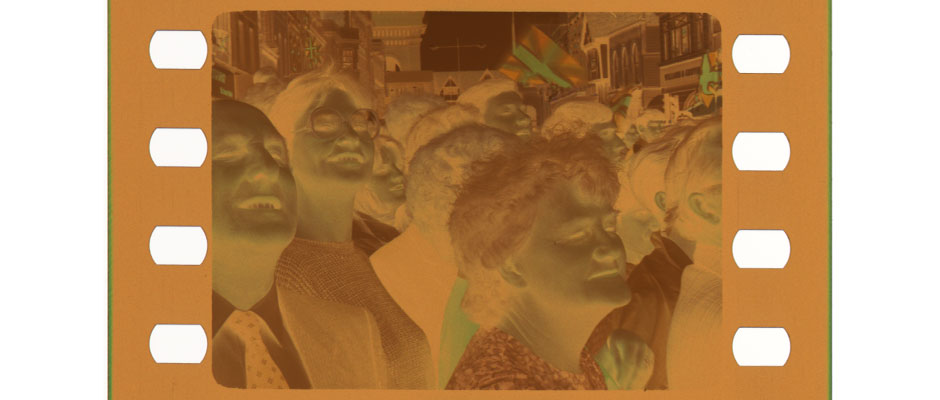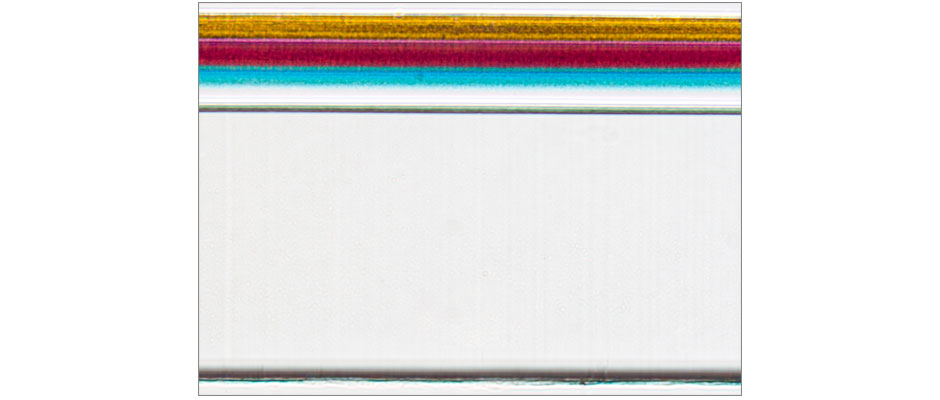


35mm negative on cellulose acetate support

The yellow dye layer is on top, followed by the magenta and cyan layers.
Process DescriptionA negative with three color-sensitive emulsion layers coated on a single support, widely used in professional film production. Dye couplers in the emulsion layers react, when processed, to produce a separate dye image in each layer. An orange masking on the processed negative, formed by unreacted couplers in the red-and green-sensitive layers, helps maintain the color balance when making prints. The emulsions necessary for chromogenic films were first developed by Agfa in the 1930s. Later, refined processes were marketed under various trade names, such as Eastman Color, Ansco Color, Fujicolor, and Ferrania Color. In the US, Eastman Color negatives predominated the market from the 1950s onwards. The same basic principles remain in use for modern color emulsions. |
|